Verso Musical Instruments launches Sine guitar, a new take on an age-old form
Verso’s Sine guitar creates another bold new form factor for the electric guitar, part of the company’s commitment to reinventing the instrument
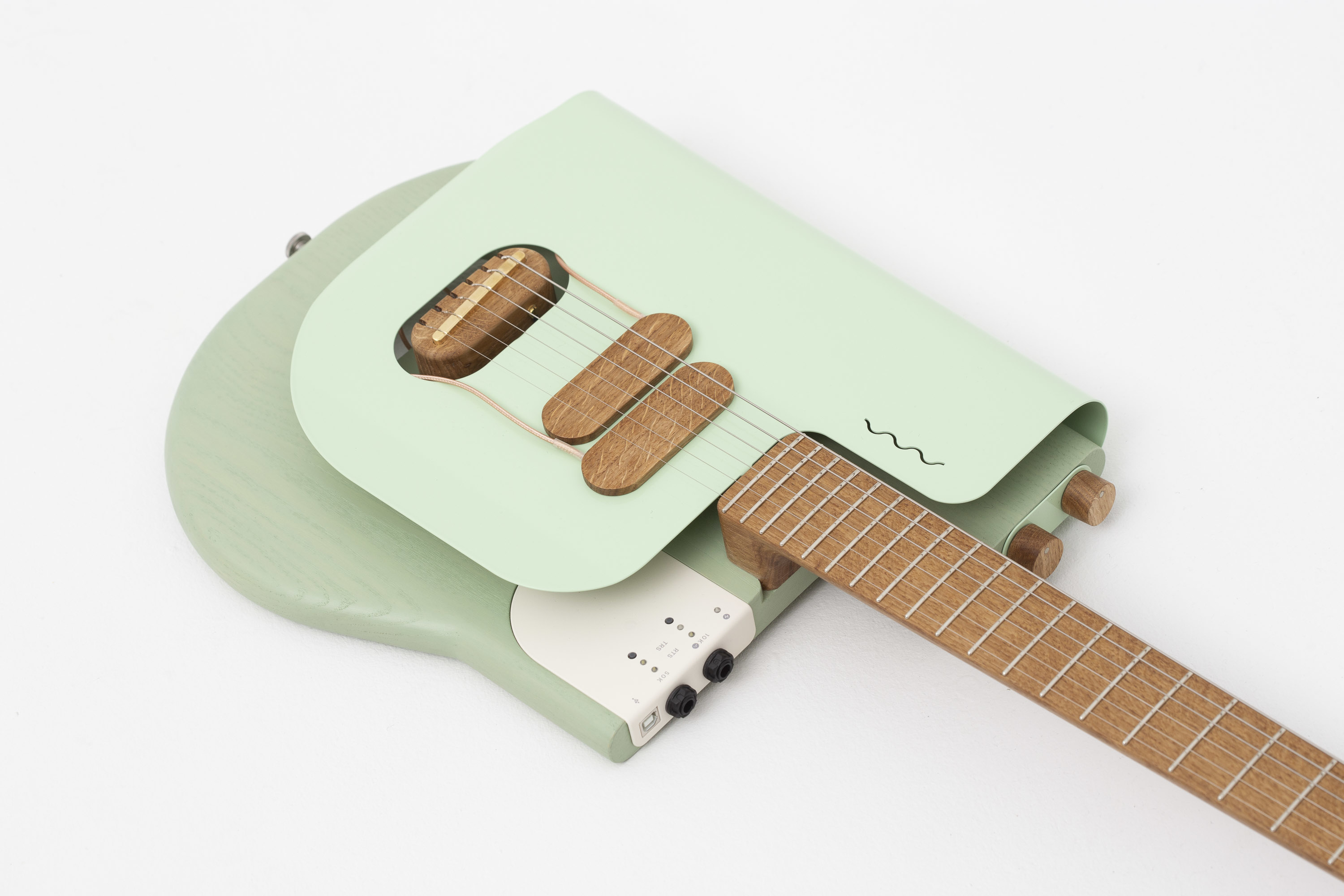
The Verso Sine guitar adds another dimension to the company’s trademark avant-garde approach, as well as marking its first foray into creating a guitar from wood. That’s practically the only traditional thing about it.
We talk craft and technology with Verso’s Robin Stummvoll, who makes all Verso instruments from his workshop in the central German city of Kassel. He tells us about the genesis of the Sine guitar and how it differs from his earlier and ultra-ambitious deconstruction of the guitar form, the Verso Cosmo.
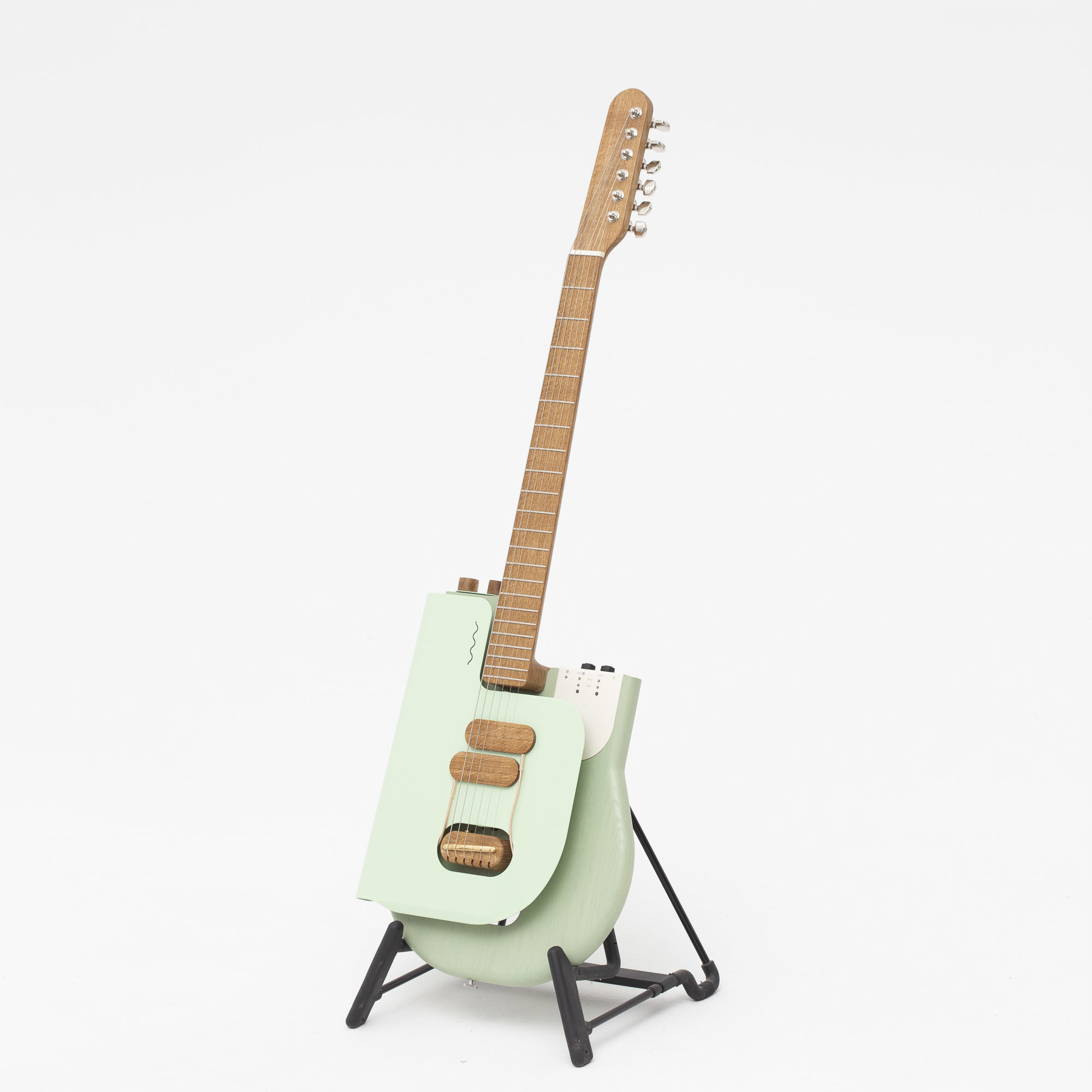
Pale green Sine Guitar by Verso Musical Instruments on stand
Wallpaper*: Where did the inspiration come from for this new guitar?
Robin Stummvoll: It came from my first model, Cosmo. Unless you have held one, you wouldn’t expect its sheet metal body to be flexible. Not in an uncontrolled or wobbly way; thanks to its large bent armrest, it functions like a tensioned spring, feeling firm yet flexible. You can push the back and top together without causing permanent deformation. Once released, it springs back to its original shape.
For years, I saw this natural flex as a part of the guitar’s comfort – it’s not a static block of wood but a responsive object that moves with your body. However, over two years ago, I realised this seemingly random detail could be intentional and useful.

The Sine guitar features the company's signature movable pick-ups
W*: So how does the Sine guitar exploit this?
RS: Instead of a static surface for mounting the pickups, I thought the body could also add a third dimension to my freely movable pickup system: a dynamic surface that can be pressed down, adding depth to the pickups’ movement. This led me to the concept of basically turning my first construction completely upside down. Rather than mounting the sheet metal body to the top of the neck, I mounted it on the back of it. This was the core idea.
Receive our daily digest of inspiration, escapism and design stories from around the world direct to your inbox.
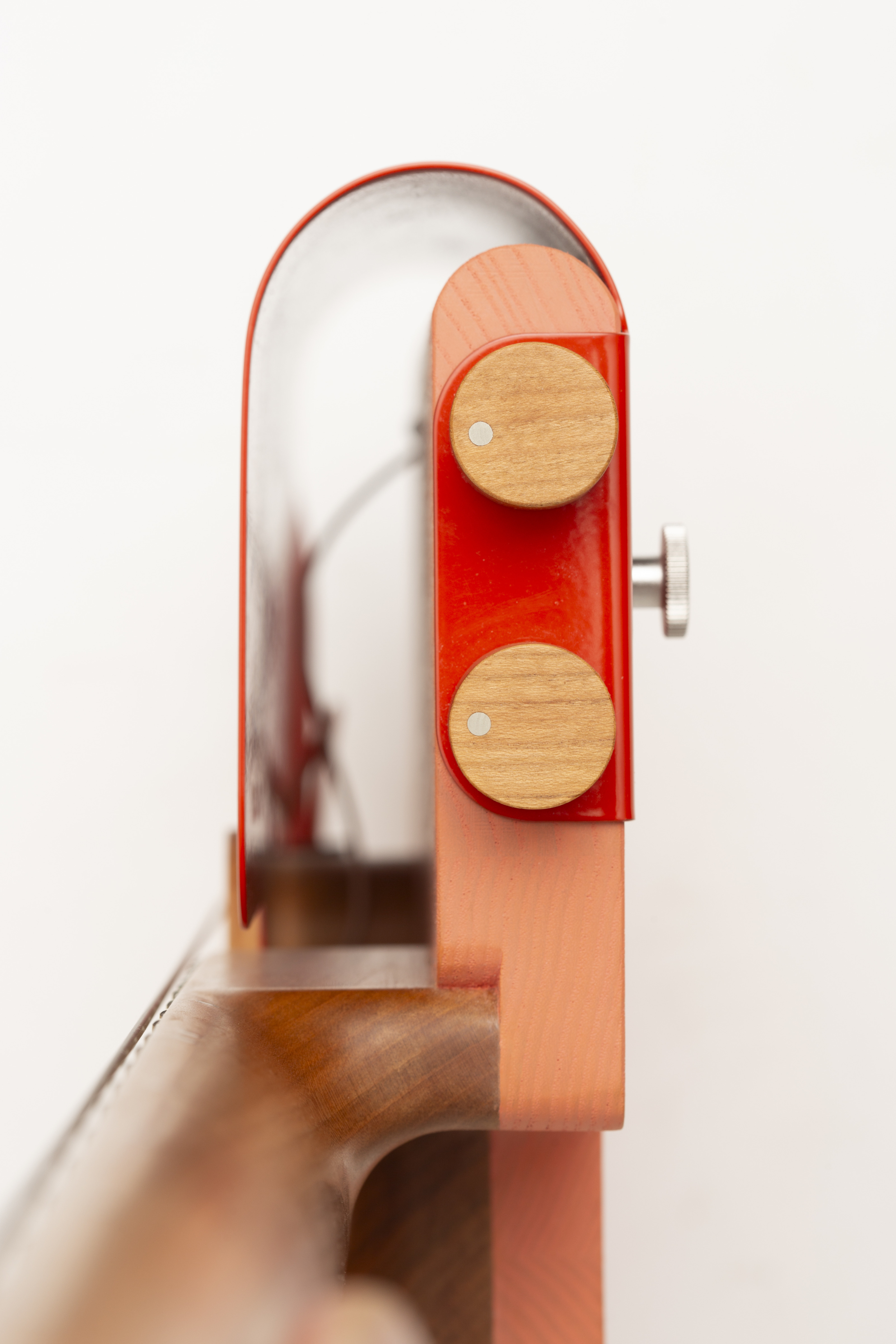
The Sine guitar, showing the wooden body and looped metal 'scratchplate'
W*: In effect it’s the inverse of the Cosmo guitar?
RS: Yes. While Cosmo's defining feature is its lack of a solid body, this new concept required one: I needed a platform with enough depth to allow the springy surface to move. This resulted in Sine’s neck and bridge being quite elevated. Sine's body is essentially split in two: half air, half wood.

Detail design of the hand-crafted Sine guitar
W*: How did you approach shaping the form?
RS: Aesthetically, it was challenging – creating a wooden guitar within the Verso family, known for the lack of such a wooden body. I think the Sine Pad, with its distinctive bent armrest, ties it all together. Other features like the headstock, pickups and the input/output section are identical to my previous instruments and create this familiar feel.
‘I think the effort and energy I put into the instruments gives them character and this is felt by the players’
Verso’s Robin Stummvoll
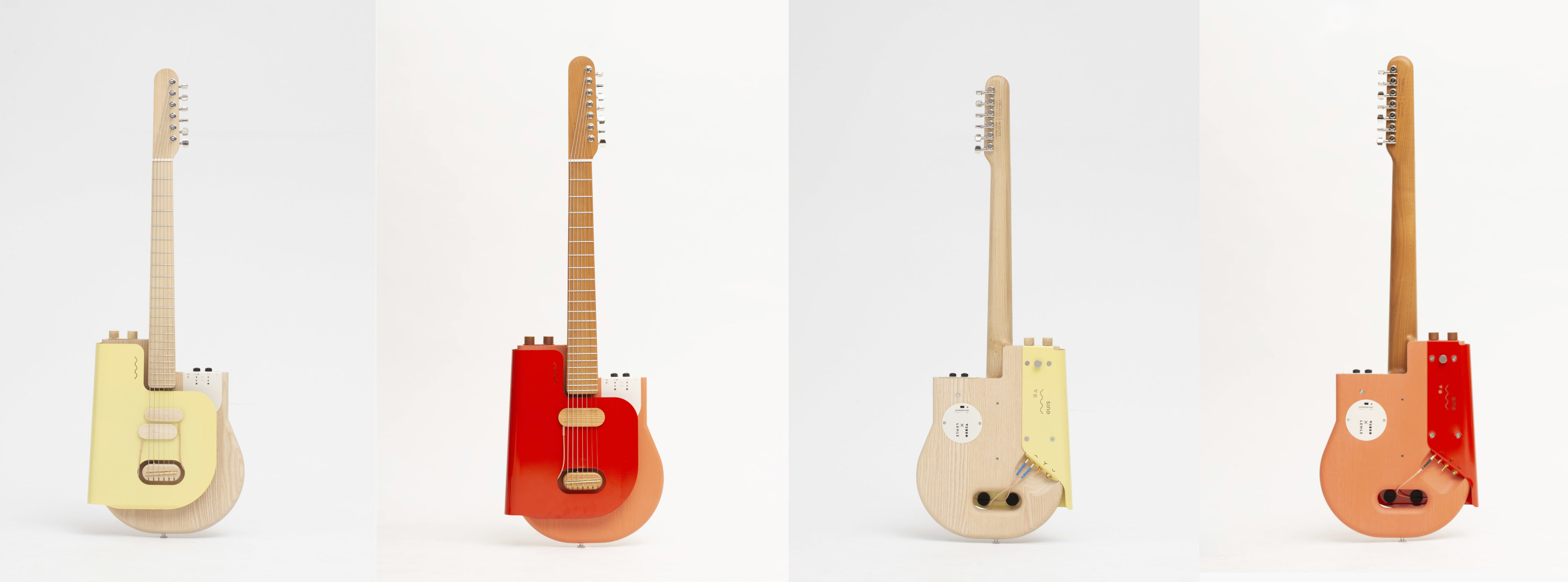
The Sine Guitar uses Verso's pared-back headstock design
W*: Do you still handcraft all the guitars yourself?
RS: Yes – Sine is completely handcrafted up to the pickups. I bend the laser-cut sheet metal in my small shop, which is a crazy difficult process on this model. Very complicated to nail the small tolerances. It required developing many custom tools.
Also, the neck joint and bridge require much attention. But these challenges add to the fun building it – I think the effort and energy I put into the instruments gives them character and this is felt by the players. All wooden parts are precisely CNC-machined and hand finished.
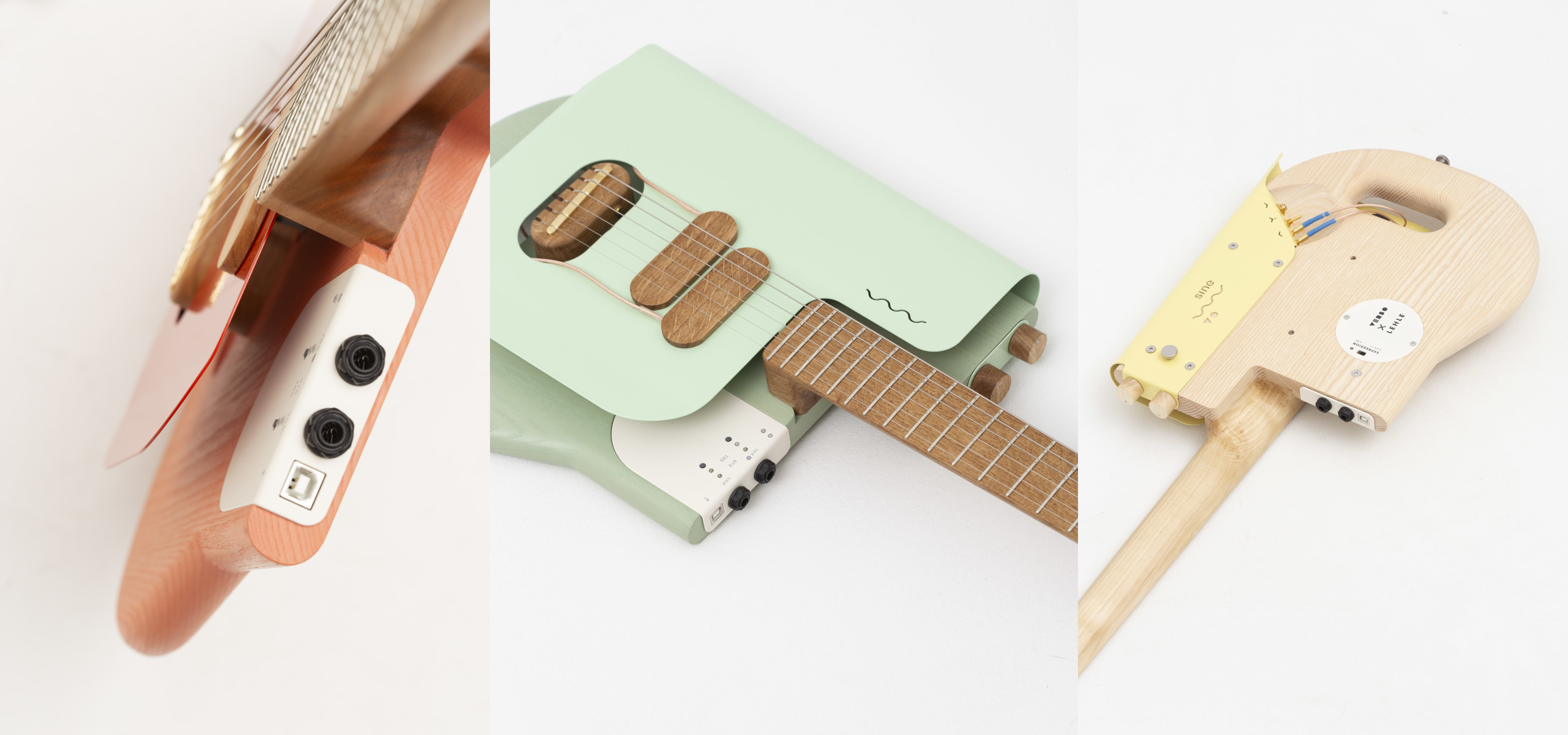
The guitar is handcrafted by Verso's Robin Stummvoll
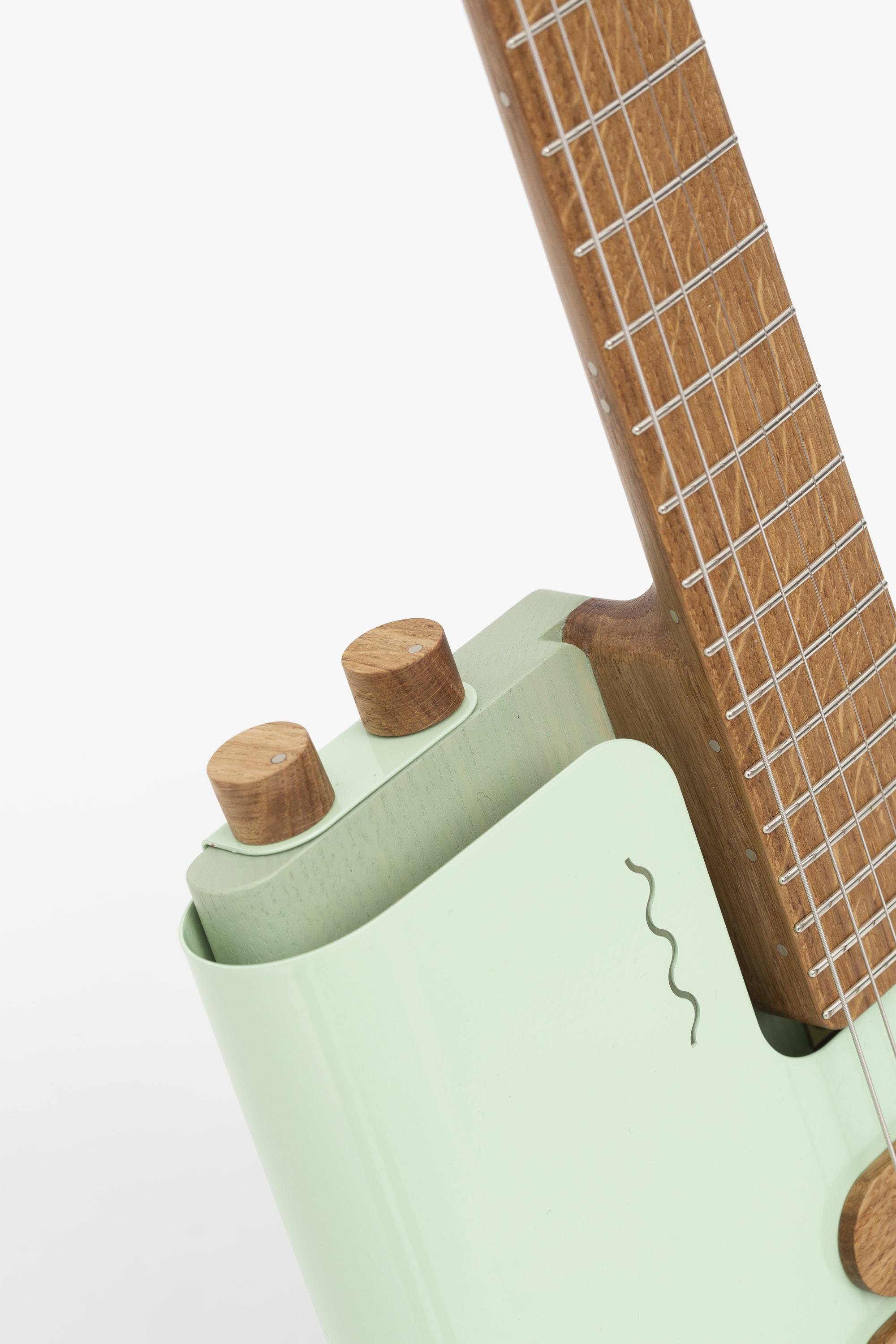
Sine Guitar by Verso Instruments
W*: How about the colours and the finishes?
RS: Surface-finishing the wooden body was a new challenge for me, as I never had to bother about spray paint, lacquer or colouring wood. In the past I combined very old techniques with my rather modern building style – like pairing a shellac-finished neck with a powder-coated body. I find so much joy and beauty in these unusual combinations.
For Sine, I also wanted to use a traditional paint, and after failing with milk-based casein paint, I luckily got introduced to the handcrafted linseed oil paints by Danish company Linolie. Their vivid tones and silky feeling but matte-looking surface will age beautifully, as it is a rather soft material.
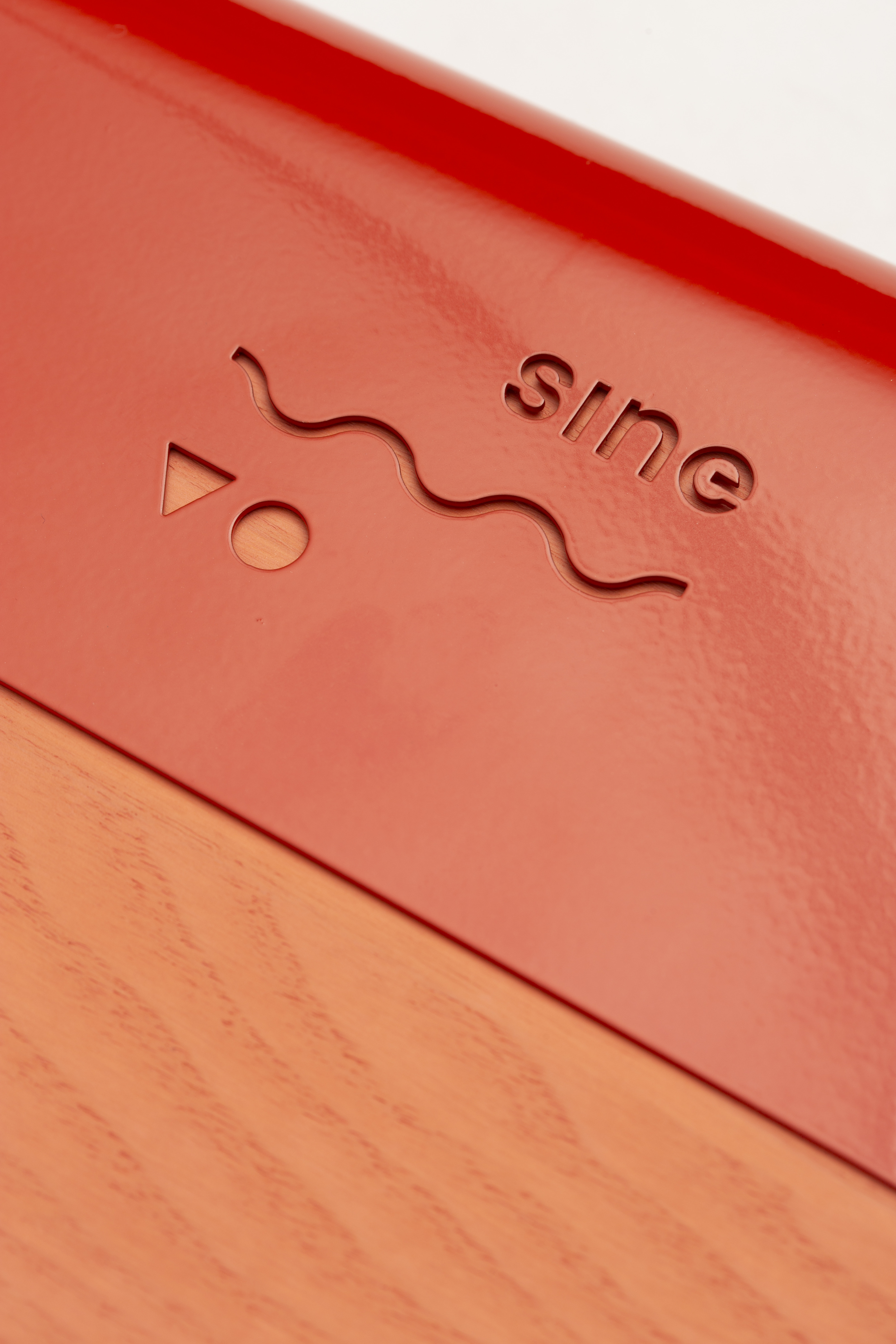
Detail design of the Sine guitar
W*: What about the internal components?
RS: The only industrial-made part is the Lehle Expression – a module that enables the guitarist to control effects, synths or a computer through the movement of the Sine Pad. Lehle provides me the PCBs. The metal housings were designed specifically for Sine and are produced in low quantities by a German-based sheet-metal manufacturer.
The graphics were printed on the parts by Burkhard Lehle himself – what a blessing to work with such an involved team! I think one of the reasons such an established and world-renowned brand like Lehle was interested in a cooperation with a small guitar builder like me, beyond the innovative concept, stems from our naturally aligned design languages.
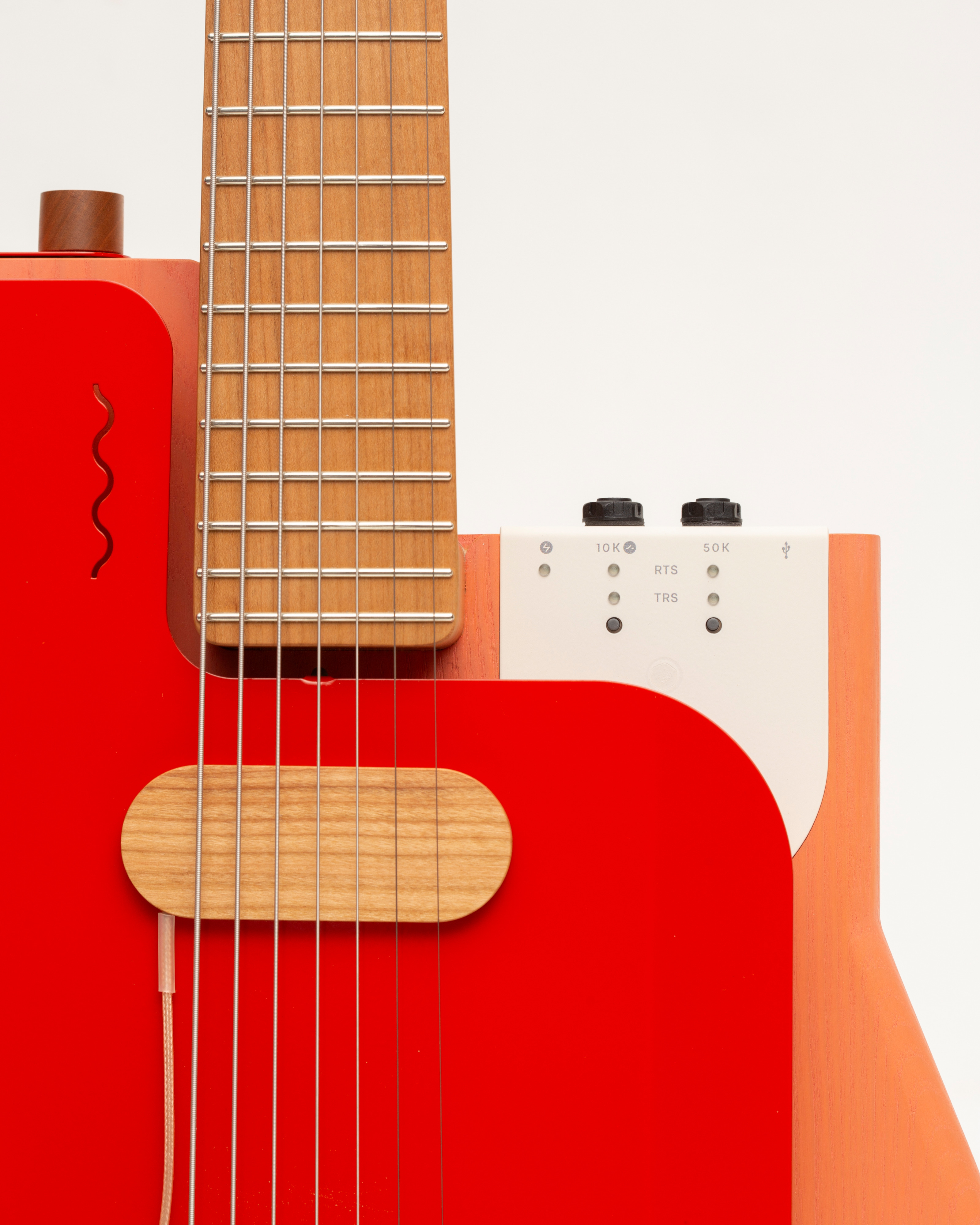
The Sine guitar is available as a 7-string model
Sine Guitar by Verso Instruments, versoinstruments.com, @versoinstruments
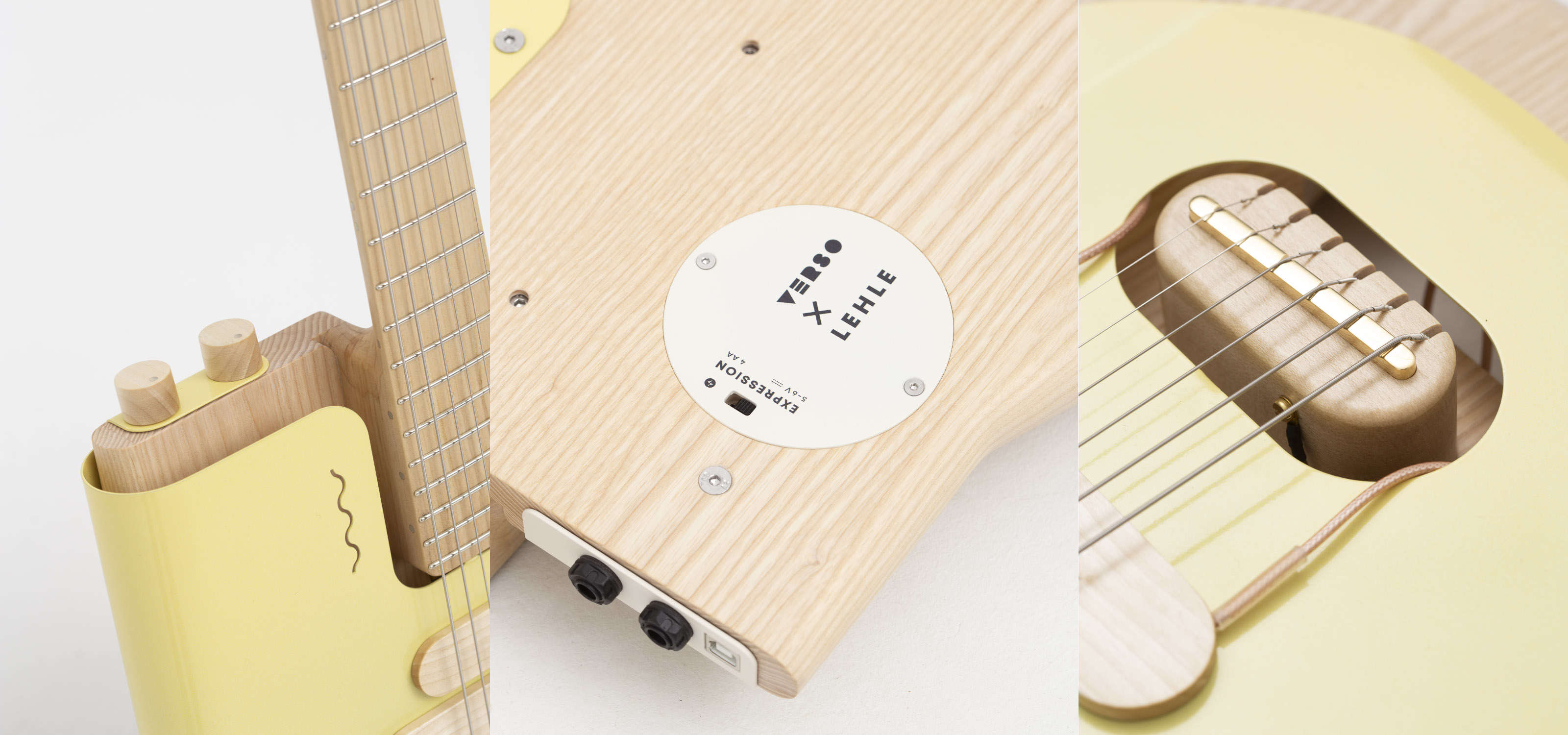
Detail design of the Sine guitar by Verso Musical Instruments
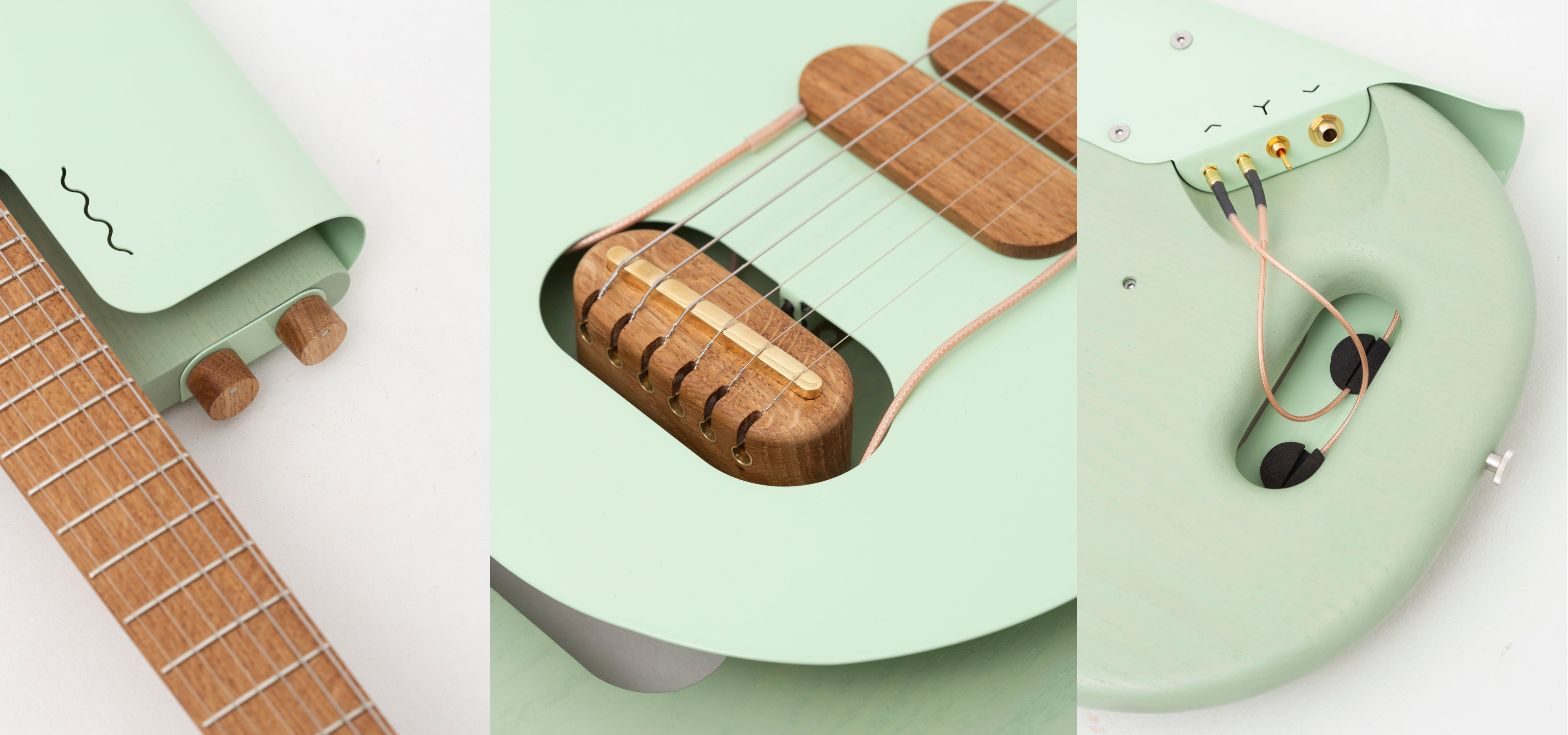
Detail design of the Sine guitar by Verso Musical Instruments
Jonathan Bell has written for Wallpaper* magazine since 1999, covering everything from architecture and transport design to books, tech and graphic design. He is now the magazine’s Transport and Technology Editor. Jonathan has written and edited 15 books, including Concept Car Design, 21st Century House, and The New Modern House. He is also the host of Wallpaper’s first podcast.
-
 LeShuttle ups its game with a forthcoming new terminal design by Hollaway Studio
LeShuttle ups its game with a forthcoming new terminal design by Hollaway StudioLeShuttle’s overhauled terminal in Folkestone will befit its role as the prime hub for the channel tunnel and as a gateway into Europe
-
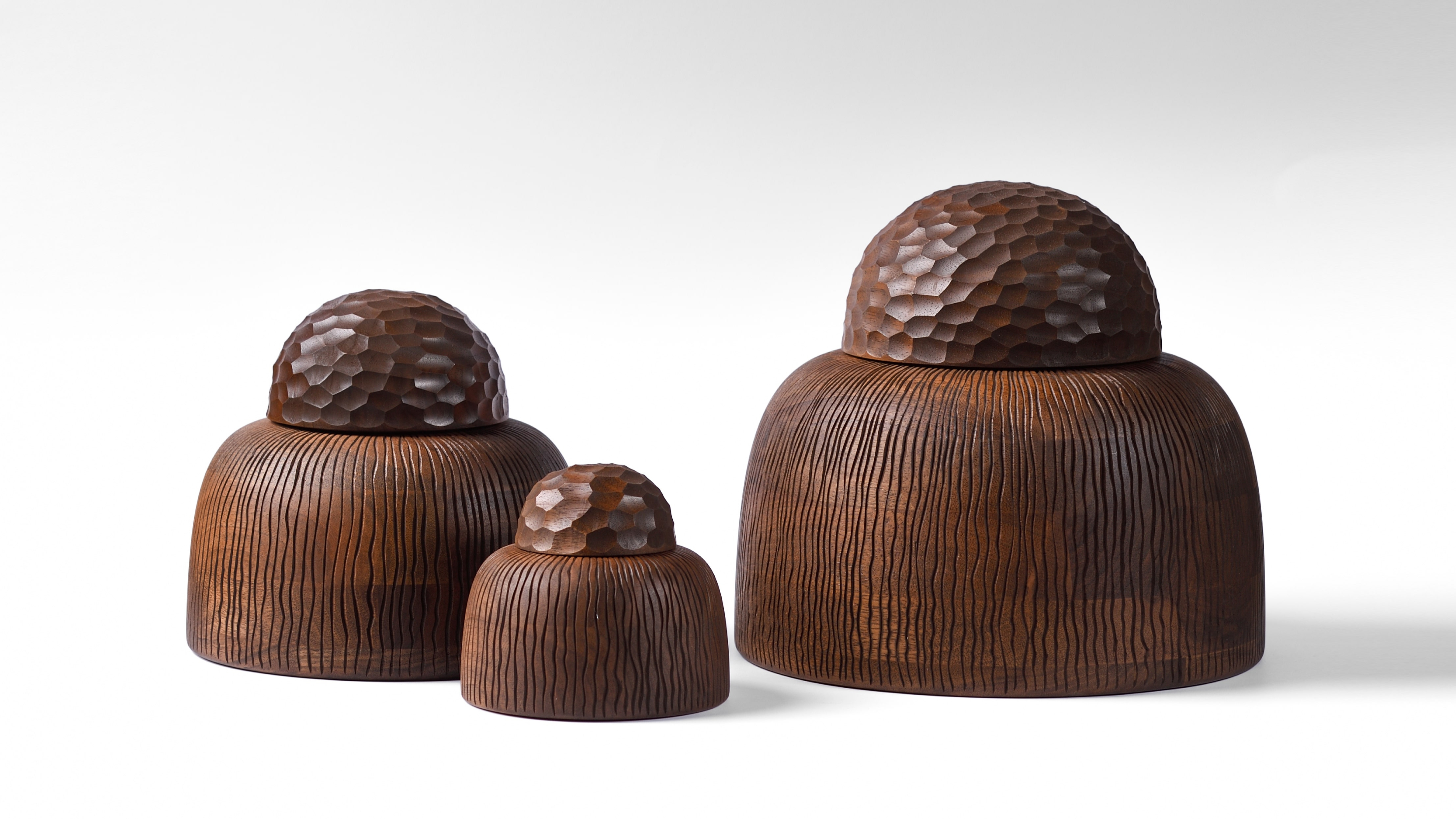 Bosnian brand Zanat has hand-carved its way into global designers’ hearts
Bosnian brand Zanat has hand-carved its way into global designers’ heartsA decade after Orhan Niksic relaunched his family’s century-old workshop, Zanat celebrates its evolution with an exhibition of new, hand-carved works that look to the future of design and craft
-
 Does Guillermo Del Toro’s Frankenstein summon the gothic flamboyance of Mary Shelley’s novel?
Does Guillermo Del Toro’s Frankenstein summon the gothic flamboyance of Mary Shelley’s novel?The visionary filmmaker was inspired by the famous 1931 adaptation of the book, but his long-gestating version is closer to its author’s astonishingly vivid tone